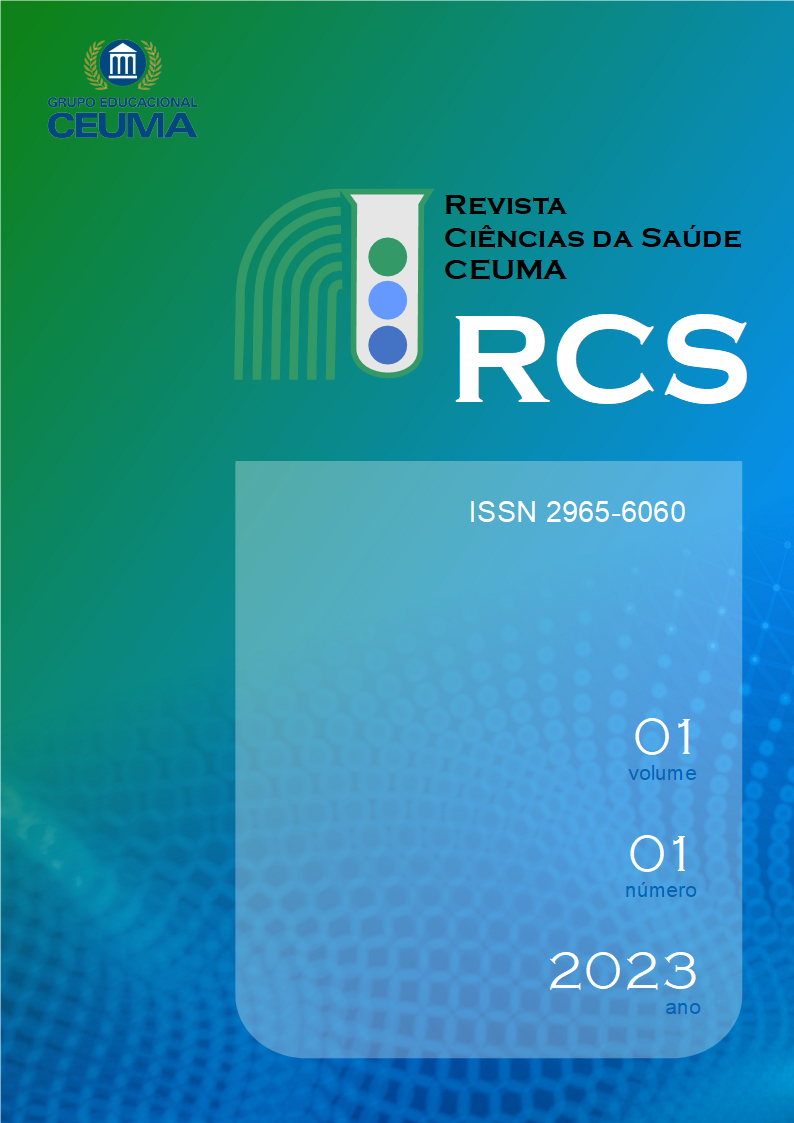Resistance training and hematological responses
a case report with a patient with severe aplastic anemia
DOI:
https://doi.org/10.61695/rcs.v1i1.4Keywords:
Aplastic anemia, Resistance training, Hematological markersAbstract
Aplastic anemia is a hematopoietic dysfunction that compromises pluripotent cells; the phenomenon that gives rise to the multiplication and maturation of the precursor or primordial cells of blood cells. It is commonly treated with immunosuppressive therapy and/or halogenic bone marrow transplantation. However, despite the comorbidities of aplastic anemia, studies associating physiological changes related to regular physical exercise are still scarce, possibly due to the low prevalence of the disease. Thus, we describe here the impact of a resistance training program on different hematological markers in a patient with severe aplastic anemia. A 39-year-old white male diagnosed with aplastic anemia 22 years ago underwent 12 weeks of resistance training. Different hematological markers were analyzed before and after 7 and 12 weeks of intervention. After the intervention an increase in reticulocytes and several other blood components were observed, the values of which remained within normal limits. In addition, there was a reduction in transaminases and liver enzymes that mark canalicular lesions, proving an improved liver condition. We conclude that after 12 weeks of strength training the patient presented positive changes in different hematological markers, such as erythrocytes, hemoglobin, hematocrit, neutrophils, and leukocytes, suggesting a positive effect of resistance training on the patient's clinical picture associated with the natural course of disease treatment.
Downloads
References
Evans PL et al. Regulation of Skeletal Muscle Glucose Transport and Glucose Metabolism by Exercise Training. Nutrients. 2019; 11(10), 2432. https://doi.org/10.3390/nu11102432
Brasil. Ministério da Saúde. Protocolos clínicos e diretrizes terapêuticas. A (2), 2010.
Goldberger JJ et al. Autonomic Nervous System Dysfunction: JACC Focus Seminar. Journal of the American College of Cardiology. 2019; 73(10): 1189-1206. https://doi.org/10.1016/j.jacc.2018.12.064
Hamerschlak N et al. Incidence of aplastic anemia and agranulocytosis in Latin America. The Latin Study. Med J. 2005; 123:101-104. https://doi.org/10.1590/S1516-31802005000300002
Lippi G, Sanchis-Gomar F. Epidemiological, biological and clinical update on exercise-induced hemolysis. Annals of Translational Medicine, 2019; 7(12). https://doi.org/10.21037/atm.2019.05.41
Lorenzi TF. Manual de hematologia: propedêutica e clínica. 4. ed. Rio de Janeiro: Guanabara Koogan; 2006.
Machado ARSR et al. Aplasia de medula óssea: características, diagnóstico e tratamento. Revista Conexão Eletrônica. 2016; 13(1).
Mangione KK, McKee E, Hickey M, Hofmann M. Aerobic training in a patient with nonsevere aplastic anemia: a case report. Arch Phys Med Rehabil. 2000;81(2):226-229. https://doi.org/10.1016/S0003-9993(00)90146-1
Medinger M et al. Pathogenesis of Acquired Aplastic Anemia and the Role of the Bone Marrow Microenvironment. Frontiers in Oncology. 2018; 8: 587. https://doi.org/10.3389/fonc.2018.00587
Moore CA, Krishnan K. Aplastic Anemia. In: StatPearls. 2022; 07. Retrieved from http://www.ncbi.nlm.nih.gov/books/NBK534212/
Nakul-Aquaronne D. Evaluation of the Sysmex XE-2100® hematology analyzer in hospital use. Journal of Clinical Laboratory Analysis. 2003, 17(4):1098-2825. https://doi.org/10.1002/jcla.10083
Peslak SA, Olson T, Babushok DV. Diagnosis and Treatment of Aplastic Anemia. Current Treatment Options in Oncology, 2017;18(12): 70. https://doi.org/10.1007/s11864-017-0511-z
Robbins SL, Kumar V, Abbas AK, Fausto N. Patologia: bases patológicas das doenças. 9. ed. Rio de Janeiro: Elsevier; 2014.
Santo AH. Aplastic Anemia-Related Mortality in Brazil, 2000-2018. Int J Blood Res Disord. 2022;9:073. https://doi.org/10.23937/2469-5696/1410073
Savaşan S. Acquired Aplastic Anemia: What Have We Learned and What Is in the Horizon? Pediatr Clin North Am. 2018;65(3):597-606. https://doi.org/10.1016/j.pcl.2018.02.006
Scheinberg, P. Tratamento atual da anemia aplástica adquirida grave. Einstein. 2011; 9(2 Pt 1):229-35. https://doi.org/10.1590/s1679-45082011rw2156
Storb R. Aplastic anemia. J Intravenous Nurs 1997;20(6):317-22.
Vaht K et al. Incidence and outcome of acquired aplastic anemia: real-world data from patients diagnosed in Sweden from 2000-2011. 2017;102(10):1683-1690. https://doi.org/10.3324/haematol.2017.169862
Downloads
Published
How to Cite
Issue
Section
License
Copyright (c) 2023 Daniel Câmara de Almeida, Wellington Lacerda Oliveira Rios, Carlos Janssen Gomes da Cruz, Eduardo Montecelli, Emerson Sebastião, Renato André Sousa da Silva

This work is licensed under a Creative Commons Attribution 4.0 International License.

